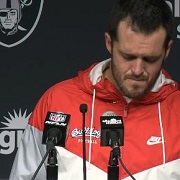|
Bandire posted:Yep, that's why I said proof of concept. The warning signs to the industry that Tesla could produce something people would want to buy started in 2008 is all I'm saying.
|
|
|
|

|
| # ? May 27, 2024 02:40 |
|
KOTEX GOD OF BLOOD posted:Some have argued that this really started with the EV1 but I'm not sure how I feel about the analysis there. I feel the EV1 would have been relevant if they had followed up on it at all, but they very pointedly did not.
|
|
|
|
DoomTrainPhD posted:I regret to inform you all that the R1T and R1S have the same dumb turn signal It has a stalk, not buttons. I will accept this. (Sorry, I couldn't let the misspelling stand.) Wibla posted:There's a convertible version of the RX8 that comes without a rotary engine I know what you're getting at, but... rear seats. Finger Prince posted:Steer by wire is a pretty well proven concept for vehicles operating in controlled environments. They're pretty robust systems, but the main reason for them is packaging, weight, cost and maintenance reduction. And the main reason for *not* having them on a road vehicle is being able to steer in a potential loss of power. CAT INTERCEPTOR posted:Planes have redundant systems, often two pilots and a rigid maintenance schedule. Yep and Nope. Finger Prince posted:Brakes are arguably a more important safety device than steering, and they've been electrically controlled for ages. I get the resistance to it but it's pretty trivial to make it multiply redundant. Hell with auto driving capabilities, if the connection to the wheel was somehow severed, the computer can still dynamically control the car's direction . There is still a physical and hydraulic connection to the brakes on any car. Your analogy is flawed. Finger Prince posted:What's the fallback when your power steering fails? Pray your noodle arms can manhandle a car that's never been designed to steer without power assist over to the shoulder? Yes, just like any car with power assist steering. quote:If all 2-3 position sensors all fail (or it has the old "if one sensor fails we dump the output of the other ones because we can't trust which is correct" logic), lane keep will keep the car in the lane, then just put your hazards on and brake until you can get somewhere safe. The failure mode I'm thinking of isn't "just" the steering going out. I don't trust computers or power systems that implicitly. YOLOsubmarine posted:Brake-by-wire cars exist. No they don't. Name one. quote:As far as drive-by-wire, Infiniti has been doing it in some of their cars since 2014, though they still have a mechanical system as a backup, at least for now. Important detail bolded. Finger Prince posted:No I mean actual brake by wire. Brake pedal attached to position sensor, sensor output goes to braking controller which drives the braking system. There is no such car. dev/null posted:The Brake by Wire systems I've been working with are designed like this: That sounds like a sane system, with a physical backup. What vehicle is this on? On a less pedantic, more positive note, that Ionic 5 looks and good. I like the specs. price, etc. so far. Might be tempted to buy one in a few years, when I'm in a position to buy a new car.
|
|
|
|
KOTEX GOD OF BLOOD posted:Some have argued that this really started with the EV1 but I'm not sure how I feel about the analysis there. I thought about making that argument but they were never sold to end customers, really. The purchase agreement was basically a long-term lease with significant GM rights, versus Roadster owners actually were able to own their cars outright. I definitely agree that the Roadster was the first really successful EV. Bandire posted:Yep, that's why I said proof of concept. The warning signs to the industry that Tesla could produce something people would want to buy started in 2008 is all I'm saying. The perception at the time was definitely that Tesla could collaborate with one of the best automotive chassis engineering firms in the world to build 2500 units of a fairly niche six figure car. Building a low volume sports car that people want to buy isn't all that hard - doing it profitably is very hard - and the world is littered with this kind of company. Now of course, people missed the boat in hindsight that this was significantly new and different, but hindsight's 20:20 and a lot of major automakers had some slightly more pressing priorities right around 2008.
|
|
|
|
Nidhg00670000 posted:In Europe, there was a 123% year-over-year growth in the EV market for the first 11 months of 2020. During the same period (jan-nov 2020) the Tesla Model 3 was down 14% in Europe and Tesla overall was down 10% for the entire 2020. When those growth and sales numbers are limited by time, like to a year or a month, they are very skewed by the release waves. The ID.3 started delivering last year for instance, which people have been waiting on for years. At the same time, lots of people are waiting for a Model Y which hasn't started delivering yet.
|
|
|
|
KYOON GRIFFEY JR posted:I thought about making that argument but they were never sold to end customers, really. The purchase agreement was basically a long-term lease with significant GM rights, versus Roadster owners actually were able to own their cars outright. I definitely agree that the Roadster was the first really successful EV.
|
|
|
|
KOTEX GOD OF BLOOD posted:Price is definitely an issue but last I checked there is still a healthy appetite among the buying public for electric cars! You can ding Tesla all you want for their QA, build quality, etc., but at the end of the day, people really, really want their product, even at a higher price than equivalent ICE cars. Much of that surely reflects economic bifurcation, but there it is. Yes, but would they sell as many Tesla's if the price was 10% higher so Tesla could make a profit?
|
|
|
|
KYOON GRIFFEY JR posted:
You aren't really disputing the sole point I was trying to make. Borrowed chassis aside, building and selling 2450 examples of an EV with ICE-like range had not been done before. Cramming batteries into an existing ICE platform is just a development shortcut and ultimately an impediment to battery efficiency as we are seeing the established automakers fight through now thirteen years later.
|
|
|
|
If *insert big auto maker here* had the desire to do so I am fairly sure they too could have lost their shirt on a short run EV sports car - at least that was certainly their perception at the time, and I don't think it was unwarranted.
|
|
|
|
Has anyone ever made any estimates or broken out how much Tesla spent and continues to spend on the supercharging network? Google mostly seems filled with estimates saying it would cost $8 billion to build as many superchargers as there are gas stations...
|
|
|
|
Indiana_Krom posted:Has anyone ever made any estimates or broken out how much Tesla spent and continues to spend on the supercharging network? Google mostly seems filled with estimates saying it would cost $8 billion to build as many superchargers as there are gas stations... Given how many gas stations there are, $8B seems pretty cheap. e: I guess that's about $50k per
|
|
|
|
taqueso posted:Given how many gas stations there are, $8B seems pretty cheap. Is that equation just 1 pump = 1 supercharger and hope that someone else offers the services a gas station offers? Itíd cost a hell of a lot more than $50k to build a gas station.
|
|
|
|
MrLogan posted:Yes, but would they sell as many Tesla's if the price was 10% higher so Tesla could make a profit? In a just world that 10% would go toward things like "painting a car better than Maaco" or "attaching the suspension, seats, bumpers, and roof properly" or even "employee safety" rather than profit.
|
|
|
|
Literally Lewis Hamilton posted:Itíd cost a hell of a lot more than $50k to build a gas station. At one point I was obsessed with the idea of building an EV charging station with convenience store. My ballpark conclusion was it'd be somewhere around $4M depending on the land. There are gas stations for sale for less than that, but DCFC charging stations are expensive, I would want the canopy to be huge and filled with solar panels, I would want massive battery storage to help offset the high demand charges, and since EVs charge slower than gas cars fill up you need more chargers than pumps to handle the longer turnover time. I'll do it if I win the lottery. Have a lot picked out and everything. If you're rich, HMU.
|
|
|
|
RZA Encryption posted:At one point I was obsessed with the idea of building an EV charging station with convenience store. My ballpark conclusion was it'd be somewhere around $4M depending on the land. There are gas stations for sale for less than that, but DCFC charging stations are expensive, I would want the canopy to be huge and filled with solar panels, I would want massive battery storage to help offset the high demand charges, and since EVs charge slower than gas cars fill up you need more chargers than pumps to handle the longer turnover time. Teslabjorn is always going to a Circle K charger in Norway. A lot of the fast chargers are adjacent to gas stations. There is one giant https://www.youtube.com/watch?v=FoN4WCpuxHY Here's a long video I got bored of watching mid-way through. There's no way a charging station should be more expensive than a gas station, unless you don't factor in the maintenance of the buried tanks. I mean in my mind, I don't know about reality.
|
|
|
|
Literally Lewis Hamilton posted:Is that equation just 1 pump = 1 supercharger and hope that someone else offers the services a gas station offers? It’d cost a hell of a lot more than $50k to build a gas station. I just did the calc as $8B / 170k stations, since I could find that number easily
|
|
|
|
Sorry for cherry picking, but this stands out:Darchangel posted:The failure mode I'm thinking of isn't "just" the steering going out. I don't trust computers or power systems that implicitly. In a pure EV, you're implicitly trusting computers and power systems to move the car at all. I'm not arguing there shouldn't be redundant signal paths, there absolutely should be. They don't have to be hydraulic or mechanical though.
|
|
|
|
Finger Prince posted:Sorry for cherry picking, but this stands out: It's not so bad if it's stopped and won't move. It's bad if it's moving and won't stop.
|
|
|
|
Ola posted:It's not so bad if it's stopped and won't move. It's bad if it's moving and won't stop. The point is you'd trust a computer to propel you to death defying speeds, but not to bring you safely back to death mitigating speeds. Seems like there's some cognitive dissonance there.
|
|
|
|
Nidhg00670000 posted:In Europe, there was a 123% year-over-year growth in the EV market for the first 11 months of 2020. During the same period (jan-nov 2020) the Tesla Model 3 was down 14% in Europe and Tesla overall was down 10% for the entire 2020. They need a smaller hatchback to do well in the European markets which are changing but still love smaller cars. The rumored Model 2 it would be a good fit.
|
|
|
|
Finger Prince posted:The point is you'd trust a computer to propel you to death defying speeds, but not to bring you safely back to death mitigating speeds. Seems like there's some cognitive dissonance there. What do you mean "propel to death defying speeds", that the accelerator would stick on? If I suffer a total electric failure while accelerating, my concern isn't the immediate lack of more speed but the ability to stop driving.
|
|
|
|
Ola posted:It's not so bad if it's stopped and won't move. It's bad if it's moving and won't stop. Or steer. That was my point. Throttle by wire is fine (when tuned correctly) because the two failure modes are mitigatable. Won't go - stay where you are if still, coast to a stop if you're moving (either could be hazardous in certain situations, but no worse than a gas car snapping a throttle cable.) Won't stop going - apply brakes. Not having brakes or steering AT ALL, no thank you. Finger Prince posted:The point is you'd trust a computer to propel you to death defying speeds, but not to bring you safely back to death mitigating speeds. Seems like there's some cognitive dissonance there. No there isn't. "Going" is not usually a safety feature. "Stopping" and "steering" are. I want mechanical backups for those.
|
|
|
|
Charles posted:Teslabjorn is always going to a Circle K charger in Norway. A lot of the fast chargers are adjacent to gas stations. There is one giant The money in the service station business is in the retail side, not the fuel distribution. For the lengths of time you'll have people there, you'll want like half of the building to be a quick service restaurant. Equipment and inventory costs a lot. Good interstate-visible lots right off an exit are expensive. My estimation is by no means scientific, though. That's a really neat video, thanks!
|
|
|
|
Darchangel posted:Or steer. Mechanical systems, be they backup or primary, can and do fail with regularity, so why would you rely on those over an electrical system? I understand a lot people have an illogical fear of electricity, but the fact is these are problems that have been solved for 30 years or more. The most important thing is to have depth in redundancy. It isn't important what form that redundancy takes, and it certainly can be mechanical or hydraulic, but it doesn't have to be. You can make a robust fully electric steering system.
|
|
|
|
Looks like the rivian forums got some info about the rivian charging network from a Salida, Colorado city council meeting.  Source: https://www.rivianforums.com/forum/threads/rivian-adventure-network-ran-charging-station-specs-revealed-300kw-with-200-920v-output.1140/
|
|
|
|
The classic illogical fear of not being able to stop a multi-ton missile moving at 75mph
|
|
|
|
Finger Prince posted:The point is you'd trust a computer to propel you to death defying speeds, but not to bring you safely back to death mitigating speeds. Seems like there's some cognitive dissonance there. At it's heart, an electronic throttle is a very simple device. While there's a few ways to impliment it, the basic idea is you take physical input (throttle) and apply it to a component that changes electrical resistance as the throttle moves and thence you have a current. There are wires that take the resulting current to the ECU. In the ECU there is a basic algorithm that has the parameters of the current value and then converts to percentages. These percentages are looked up on a table that tells the ECU what voltage to send down another set of wires. That voltage is applied to a stepper motor connected to a throttle blade in ICE, in EV it goes to a power control unit. In ICE that throttle blade sets how much air to enter the engine. In the power control unit, that sets how much current to apply to the motor(s) Now while I may have gotten some terms wrong due to being early morning here, thats all there is. It's a well understood idea with very simple code and simple hardware. More importantly, the default failure mode is also well understood and easy to impliment - deny voltage / current to the stepper motor / PDU. Electronic throttles are notoriously tricky to get working because of this failure mode and they will simply not work unless the ECU is happy with what it is seeing and the stepper motor is in good order. The ECU moreover can allow for a limp-home mode that only partially denies voltage. A simple, well understood with good well understood failure modes. This is why cars with throttle issues dont run away. If they have an issue in the first place, the hardware is very much able to be easily hardened for decades of life. Steering and brakes are not this easy to impliment and do not have the kind of safer failure state of an electronic throttle. A pure steer or brake by wire is not something that is moreover any better than the mechanical equivalent, especially steering. A electronic throttle is. CAT INTERCEPTOR fucked around with this message at 22:14 on Feb 26, 2021 |
|
|
|
Its not everywhere, but Iíve stopped at superchargers that are connected to service stations / gas stations already. Especially wawa and Sheetz(the superior one) on the east coast.
|
|
|
|
CAT INTERCEPTOR posted:Steering and brakes are not this easy to impliment and do not have the kind of safer failure state of an electronic throttle. A pure steer or brake by wire is not something that is moreover any better than the mechanical equivalent, especially steering. A electronic throttle is. Better is a pretty loaded term but there are good reasons to do both depending on your goals. Steer by wire makes it simpler and more energy efficient to implement things like lane keep assist because the system doesnít have to move the wheel to move the tires. Brake by wire allows more control over brake feel and can do away with the pedal pulsing you get on ABS systems which can be disorienting if you havenít experienced them before. And the failure mode for all of them can be the same as with fully electric gas pedals: have redundancy to survive single component failure and default to stopping the car if you lose communication with critical components along all paths. Thereís also a blind spot here where the failure mode of an electronic throttle is considered *safe* because youíre only thinking about a communication disruption, not a communication error. The danger with electronic throttle control is that the system sends bad data and causes the car to go faster than intended rather than not accelerate at all. Many cars these days include what is effectively a kill switch that cuts the throttle when the brake is applied, but thatís an electronic component that might fail as well. These things may end up being poorly implemented and dangerous but thatís not because they are, by necessity, unsafe, itís because of regulatory capture and cost benefit analysis determining that itís cheaper to kill a few people sometimes.
|
|
|
|
Finger Prince posted:Mechanical systems, be they backup or primary, can and do fail with regularity, so why would you rely on those over an electrical system? I understand a lot people have an illogical fear of electricity, but the fact is these are problems that have been solved for 30 years or more. The most important thing is to have depth in redundancy. It isn't important what form that redundancy takes, and it certainly can be mechanical or hydraulic, but it doesn't have to be. You can make a robust fully electric steering system. Boeing engineer spotted. Seriously though, I work with quad redundant electro-hydraulic systems, and they serve their purpose, but they also have massive quality assurance and maintenance burdens because electronics have a massive array of failure modes that simply aren't present in direct mechanical systems. And steering and braking are always more important than propulsion, it's a lot easier for the steering system to suddenly ram you into a jersey barrier at 70mph than it is for the propulsion system. Furthermore, I just don't see what the great benefit of replacing the master cylinder linkage or steering column with a bundle of sensors and actuators is.
|
|
|
|
YOLOsubmarine posted:Better is a pretty loaded term but there are good reasons to do both depending on your goals. Steer by wire makes it simpler and more energy efficient to implement things like lane keep assist because the system doesnít have to move the wheel to move the tires. Wait, steer by wire won't move the steering wheel? That can't be right. That means the steering is out of sync with the wheel when you need to take over. The energy use would be a pittance anyway. Synthetic feedback can be done by modern power steering and brakes anyway, without disconnecting them mechanically. A big plus for steer and brake by wire is packaging, you can get rid of linkages. But I'm happy to sacrifice some frunk space for mechanical redundancy tyvm. YOLOsubmarine posted:Thereís also a blind spot here where the failure mode of an electronic throttle is considered *safe* because youíre only thinking about a communication disruption, not a communication error. The danger with electronic throttle control is that the system sends bad data and causes the car to go faster than intended rather than not accelerate at all. Many cars these days include what is effectively a kill switch that cuts the throttle when the brake is applied, but thatís an electronic component that might fail as well. That requires two separate things to fail though. If we're stacking theoretical failures, all bets are off anyway. Some mechanical impact could theoretically make a carb throttle stick open, break a steering link and puncture some brake lines.
|
|
|
|
YOLOsubmarine posted:Better is a pretty loaded term but there are good reasons to do both depending on your goals. Steer by wire makes it simpler and more energy efficient to implement things like lane keep assist because the system doesnít have to move the wheel to move the tires. Brake by wire allows more control over brake feel and can do away with the pedal pulsing you get on ABS systems which can be disorienting if you havenít experienced them before. There really isnt THAT much of a simplicity or energy difference in having a steering column attached to the power steering units, especially now when the power steering is electrical assist. Also Im not sure where more control over brake feel is from because the brake by wire is a disconnect and at the moment dual systems have a rubber mat to imitate brake feel that gives no actual feedback. Pedal pulsing for ABS isnt anything like what it was on earlier systems too, it barely kicks back anymore. quote:And the failure mode for all of them can be the same as with fully electric gas pedals: have redundancy to survive single component failure and default to stopping the car if you lose communication with critical components along all paths. There's all sorts of senarios where I can think of that this default stop state or failure to steer state can be problematic. The alternative is a mechanical system that is well understood and will do exactly what the driver wants and moreover have proven to be able to outlast electronic sensors in reliability and are not complex quote:Thereís also a blind spot here where the failure mode of an electronic throttle is considered *safe* because youíre only thinking about a communication disruption, not a communication error. The danger with electronic throttle control is that the system sends bad data and causes the car to go faster than intended rather than not accelerate at all. Many cars these days include what is effectively a kill switch that cuts the throttle when the brake is applied, but thatís an electronic component that might fail as well. Communication error is less likely than on a cable throttle. Cable throttles have issues with sticking that come up more than bad data on a electronic system - electronic throttles are a genuine improvement on reliability. If you get bad data on a electronic system you are more likely to get {Err data out of bounds} that the ECU will throw away as outside it's parameters. The sampling rate also gives the ECU a chance to sift through the comms it is getting to see if it is still getting rubbish and if the error count exceeds acceptible value it's more likely to throw a code and go into limp home mode than to accept incorrect throttle input. My stance is basically summed up as put electronics where they appropriate, leave the critical mechanical systems in for where they have proven to just work and dont need committees to discuss trolley problems if they fail.
|
|
|
|
I know some control is better than no control, but I'd guess three quarters of drivers would not be able to turn the steering wheel a meaningful amount or apply enough manual pressure to the brakes in a modern car that lost power.
|
|
|
|
Bandire posted:I know some control is better than no control, but I'd guess three quarters of drivers would not be able to turn the steering wheel a meaningful amount or apply enough manual pressure to the brakes in a modern car that lost power. A terrible guess which is very wrong.
|
|
|
|
Ola posted:A terrible guess which is very wrong. I hope so. My experience is limited, but several years back I was driving a car that shut off unexpectedly, and it took a tremendous amount of effort to just to steer to the shoulder and stop the car. Edit: GM Ignition recall from 2014: https://www.vox.com/platform/amp/2014/10/3/18073458/gm-car-recall quote:In the first three months of 2014, GM ordered the recall of 2.6 million small cars because of faulty ignition switches that have been linked to at least 97 deaths since 2005. A lot of the deaths were likely due to the airbags also being disabled, but the accidents themselves were from loss of power steering and braking due to the ignition shutting off. Its already a problem now in that scenario. Bandire fucked around with this message at 00:35 on Feb 27, 2021 |
|
|
|
Ola posted:Wait, steer by wire won't move the steering wheel? That can't be right. That means the steering is out of sync with the wheel when you need to take over. The energy use would be a pittance anyway. If itís just making minor adjustments for lane keep it can isolate those movements from the driver. Itís basically the same principle as using steer by wire to isolate the feedback from the road so the driver doesnít feel it, which sounds awful if you like driving but great to a lot of people who just want to be cosseted in their car. As far as whether we are stacking theoretical failures...well thatís the same thing youíre doing to argue that you need a mechanical backup in spite of having multiple independent sensors, data and control paths.
|
|
|
|
It probably still has a mechanical backup anyway. Nobody has given any details.
|
|
|
|
I got to test drive a Tesla Long Range Model Y and then a Mustang Mach-E (Premium AWD extra range) pretty much back to back today. I had the bar pretty low for the Tesla, but the lack of dash info display was not as bad as I expected. I also expected the Tesla to be fast, but it was quite a bit faster than I expected. Granted, my previous BEV experience was test driving a Chevy Bolt last month, but I now get why people say Teslaís are fast. I couldnít imagine driving a performance MY, and I drive a Charger with 485hp. I was a bit surprised that the suspension in the Model Y was as stiff as in my Charger. I was figuring going into a crossover like vehicle would have a bit of a softer suspension, but not so much there. Or at least have some more flex from larger tires. Other thing of note is how tiny looking through the rear hatch is. Maybe itís something that you get used to over time, but that was like looking through a tunnel. Otherwise, the seats were comfortable, and there was plenty of room. It was sunny today, and the glass roof seemed to let in a lot more sun when I was sitting in the back, compared to the Mach-E. Not a huge amount more, but I was right on the edge of needing a hat or something in the Tesla. The demo I drove appeared to have the old style piano black center console. Not sure if the new style would have significantly changed my thoughts on anything. As for the Mach-E, I think I liked it a little bit more. I found the drivers seat a little more comfortable, and the suspension (and ride) a little softer. It wasnít as fast as the Tesla, but it was fast enough for me. I didnít get to drive it for too long to push its limits though. The storage in the trunk and frunk was less than the Tesla. But it looked to be adequate for my needs. My wife has a minivan for moving large amounts of stuff. The glass roof of the Mustang had a darker tint than the Tesla. At no point did I have any concern about the brightness of the sun overhead. The salesman said something about the tint level adjusting automatically. Admittedly there was a little less room behind the drivers seat in the Mach-E. I think in the Tesla I had maybe an inch of space between my knees and the seat, but my knees hit the seat in the Mustang. I also noticed when looking at the frunk of the Mach-E, how rigid and solid the hood was. I am sure that is part of why the Mach-E is 500+ pounds heavier than the Model Y, but the Model Y hood looked to be flexing oddly when the salesperson had it open and was closing it. All in all, I donít think I would be upset in the long run with a Model Y. I just think at this point I would be happier with a Mustang. All the advantages that the Tesla has (range, charging network, acceleration, cargo space) are not things that I am prioritizing. I can see why many people would be, especially if it is their only vehicle. I am probably going to wait until March and see if VW can actually get demo ID.4 models out to dealerships to give that a try before I actually order something.
|
|
|
|
My electronic throttle decided one day that one of the sensors was wrong and couldn't rely on the other to verify what position it was in and so the failure mode was it not allowing the car to rev past 2k. It magically fixed itself somehow but I'm always waiting for it to do it again. And power steering was mentioned before like what happens if that dies? I turn the steering wheel, the car still steers as it did before just harder at speeds under 5mph. I drove a car for a yeah that had blown a power steering line without issue. Call me old fashioned but a physical connection to controls is something I quite like.
|
|
|
|

|
| # ? May 27, 2024 02:40 |
|
YOLOsubmarine posted:As far as whether we are stacking theoretical failures...well that’s the same thing you’re doing to argue that you need a mechanical backup in spite of having multiple independent sensors, data and control paths. Loss of power requires 1 failure. pun pundit fucked around with this message at 02:30 on Feb 27, 2021 |
|
|















































